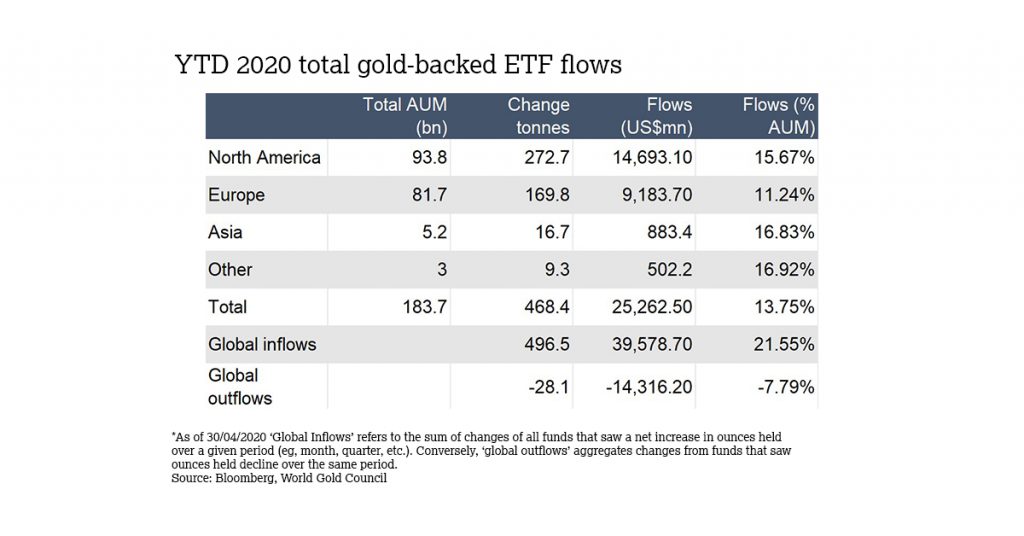
Gold prices rebounded on Thursday as new data shows surging unemployment figures in the US, stoking fears over a global economic downturn.
Spot gold rallied back above $1,700 an ounce, up 2.2% to $1,722.49 as of 2:30 p.m. ET. Gold futures also gained 2.6%, trading at $1,731.90 in New York.
“You had high unemployment (numbers) that came out … That’s still telling people to maybe look for the safety trade,” says Michael Matousek, head trader at US Global Investors.
Another set of data showed worker productivity dropped at its fastest pace in more than four years in the first quarter, adding to expectations of more stimulus measures from central banks, which may further drive up demand for safe haven assets like gold.
Matousek adds that “gains for the dollar, also considered a safe haven, capped gold’s advance, with the US currency hitting an a near two-week peak versus key rivals.”
“The dollar is really weighing on gold’s potential for a rally,” says Phil Streible, chief market strategist at Blue Line Futures in Chicago.
“We are going to need a way to see a breakout all the way above $1780-$1,788 before it (gold) gets going,” he said.
Earlier in the day, data released by the World Gold Council shows global holdings in gold-backed ETFs continued to rise in April even as stocks and bonds regained some traction.
Net inflows were up 5.1% for the month, adding 170 tonnes ($9.3 billion) and boosting total holdings to a new all-time high of 3,355 tonnes.
Assets under management (AUM) also reached a new record high of $183 billion as gold in dollar terms was 5.8% higher during the month, the World Gold Council reports. AUM in gold ETF assets has grown by 80% over the past year.
Inflows have been strong and consistent in recent months, but not unprecedented, the Council says. Rolling 12-month inflows of 879 tonnes just surpassed those of 2009 and 2016, while rolling six-month inflows were less than two-thirds of the 457 tonnes of inflows in the comparable time periods of 2009 and 2016.
Gold trading volumes averaged $140 billion a day in April, a decrease from March data but roughly in line with the 2019 daily average, the Council adds.

Regionally, North America drove the bulk of global gold ETF inflows in April, adding 144 tonnes ($7.8 billion, 8.3% AUM). European funds added 20 tonnes ($1.1 billion, 1.4% AUM), while funds listed in Asia (primarily China) finished the month with inflows of 2.9 tonnes ($206 million, 3.9% AUM). Other regions had inflows of 3.3 tonnes ($172 million, 5.8% AUM).
“Continued record growth for gold-backed ETFs, despite some rebound in other asset classes, highlights that investors are embracing gold’s role as a store of value and source of liquidity and returns,” says Juan Carlos Artigas, Head of Research at WGC.
“The strong investment demand for gold is not surprising as gold has repeatedly proven itself as an effective hedge during complex and challenging market conditions, including the global financial crisis and the current covid-19 pandemic.”
Gold has outperformed most major asset classes so far and is up 11% year-to-date.